
Jarabacoa: The Heartbeat of Dominican Adventure
Discover Jarabacoa, the Dominican Republic's hidden gem, where the spirit of adventure meets the tranquility of nature in a city blessed with eternal spring.
Nestled amidst the verdant mountains of the Dominican Republic, Jarabacoa is a haven for nature lovers and adventure seekers. This city, known as the 'City of Eternal Spring,' boasts a temperate climate that provides a refreshing escape from the coastal heat. The lush landscapes, with their rolling hills and dramatic waterfalls, make it an ideal destination for hiking, rafting, and other outdoor activities. Jarabacoa is also a cultural gem, offering visitors a taste of traditional Dominican life. The city’s vibrant markets are brimming with local produce, handmade crafts, and the lively rhythms of merengue and bachata music. Whether you're exploring the historical church of Nuestra Señora del Carmen or savoring the local cuisine in a cozy restaurant, you'll find that Jarabacoa seamlessly blends adventure with relaxation. Don't miss a visit to the nearby Jimenoa and Baiguate waterfalls, where the stunning natural beauty will leave you breathless. For those interested in agriculture, the region's coffee plantations offer tours that reveal the secrets of Dominican coffee production. With its unique combination of natural splendor and cultural richness, Jarabacoa is a must-visit destination in the Dominican Republic.
Local tips in Jarabacoa
- Wear comfortable hiking shoes; the terrain can be rugged.
- Visit during the dry season (November to April) for the best weather.
- Try local dishes like 'La Bandera Dominicana' for an authentic culinary experience.
- Book adventure tours in advance, especially during peak travel seasons.
- Bring a light jacket; evenings can be cooler than the coast.
Jarabacoa: The Heartbeat of Dominican Adventure
Nestled amidst the verdant mountains of the Dominican Republic, Jarabacoa is a haven for nature lovers and adventure seekers. This city, known as the 'City of Eternal Spring,' boasts a temperate climate that provides a refreshing escape from the coastal heat. The lush landscapes, with their rolling hills and dramatic waterfalls, make it an ideal destination for hiking, rafting, and other outdoor activities. Jarabacoa is also a cultural gem, offering visitors a taste of traditional Dominican life. The city’s vibrant markets are brimming with local produce, handmade crafts, and the lively rhythms of merengue and bachata music. Whether you're exploring the historical church of Nuestra Señora del Carmen or savoring the local cuisine in a cozy restaurant, you'll find that Jarabacoa seamlessly blends adventure with relaxation. Don't miss a visit to the nearby Jimenoa and Baiguate waterfalls, where the stunning natural beauty will leave you breathless. For those interested in agriculture, the region's coffee plantations offer tours that reveal the secrets of Dominican coffee production. With its unique combination of natural splendor and cultural richness, Jarabacoa is a must-visit destination in the Dominican Republic.
When is the best time to go to Jarabacoa?
Iconic landmarks you can’t miss
Café Colao
Experience the essence of Dominican cuisine at Café Colao in Jarabacoa, where every dish is a celebration of local flavors and culture.
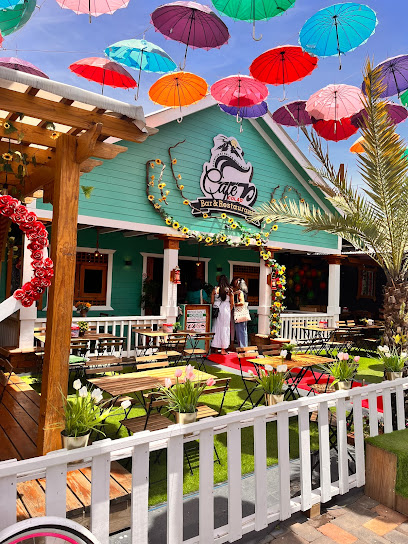
Jamaca de Dios Restaurant
Discover the authentic flavors of the Dominican Republic at Jamaca de Dios Restaurant, a top dining destination in Jarabacoa with breathtaking mountain views.
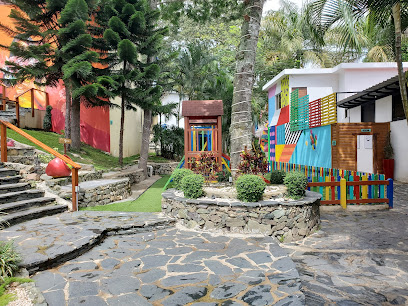
La Tinaja
Experience authentic Dominican flavors at La Tinaja, a culinary haven in Jarabacoa, perfect for tourists seeking a taste of local cuisine.
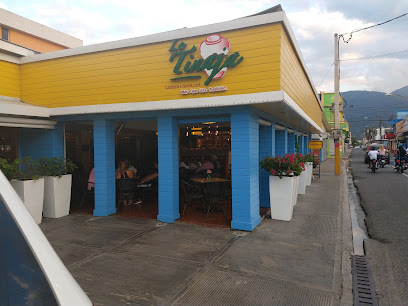
Gran Jimenoa Hotel
Experience the tranquility of Gran Jimenoa Hotel, your ideal escape in the lush landscapes of Jarabacoa, Dominican Republic.

Jarabacoa River Club & Resort
Explore the natural beauty and adventure at Jarabacoa River Club & Resort, a serene haven in the heart of the Dominican Republic's lush mountains.

Duarte Jarabacoa Park
Explore Duarte Jarabacoa Park, a serene paradise in the Dominican Republic, offering breathtaking natural beauty and outdoor adventures for every traveler.
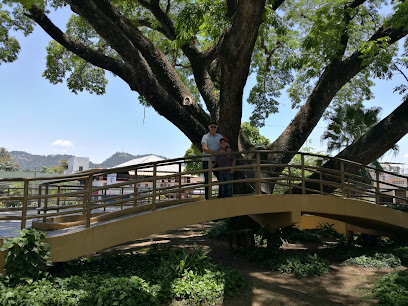
La Confluencia
Experience the breathtaking beauty and thrilling adventures at La Confluencia, a hidden gem in Jarabacoa’s lush landscapes.
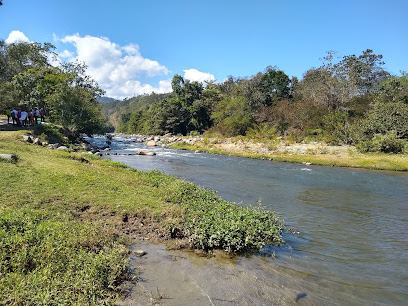
El Fresco Bistro y Café
Discover the vibrant flavors of the Dominican Republic at El Fresco Bistro y Café in Jarabacoa, where every meal is a celebration of local ingredients and culinary artistry.
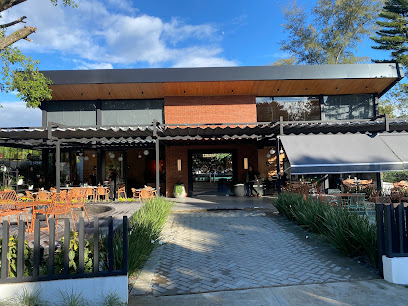
Salto Jimenoa Two
Experience the breathtaking beauty of Salto Jimenoa Two, a stunning waterfall in Jarabacoa, Dominican Republic, perfect for nature lovers and adventure seekers.
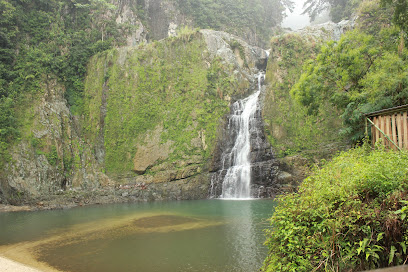
Baiguate Lodge
Discover the serene beauty of Baiguate Lodge, your perfect escape for adventure and relaxation in the heart of Jarabacoa, Dominican Republic.
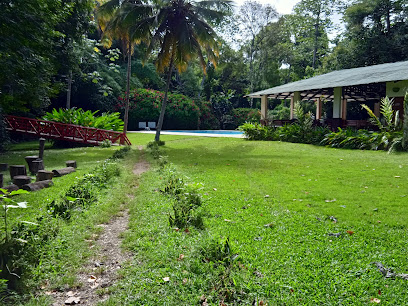
Letrero JARABACOA
Experience the breathtaking beauty and vibrant culture of Letrero JARABACOA, a must-see attraction in the heart of Jarabacoa, Dominican Republic.
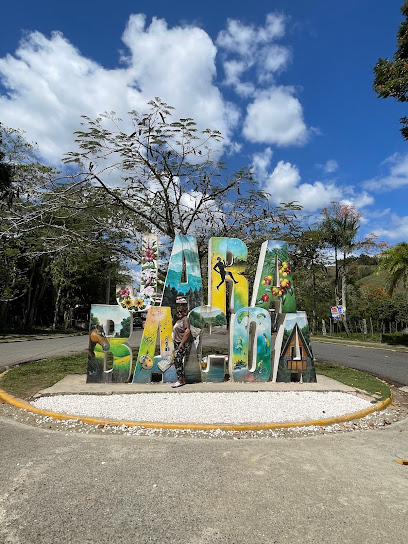
Plaza Alterra
Discover the flavors of Jarabacoa at Plaza Alterra, where local ingredients meet international cuisine in a warm and inviting setting.
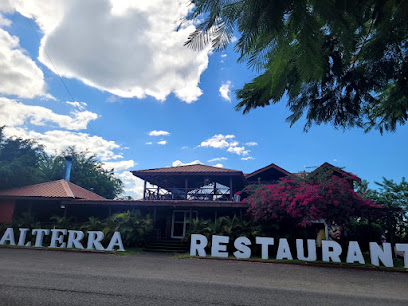
Jarabacoa Country Club
Discover the beauty and tranquility of Jarabacoa Country Club, where nature meets recreation in the heart of the Dominican Republic.

Ribera Country Club
Experience the exquisite fusion of local flavors and international cuisine at Ribera Country Club in Jarabacoa, surrounded by breathtaking landscapes.
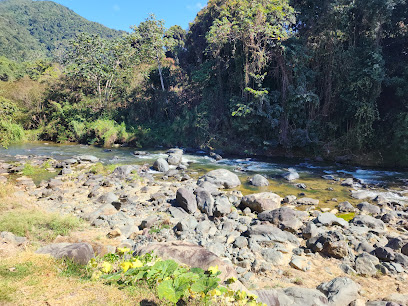
Jarabacoa Serie 50
Experience a culinary journey at Jarabacoa Serie 50, where local flavors meet international cuisine amidst stunning mountain views.
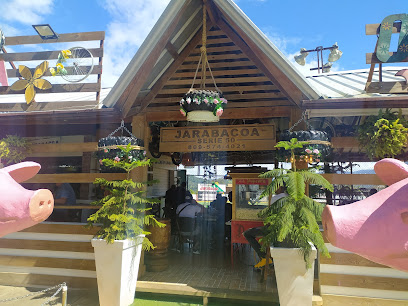
Unmissable attractions to see
Duarte Jarabacoa Park
Experience the natural beauty and adventure of Duarte Jarabacoa Park, a must-visit destination in the Dominican Republic offering breathtaking landscapes and outdoor activities.
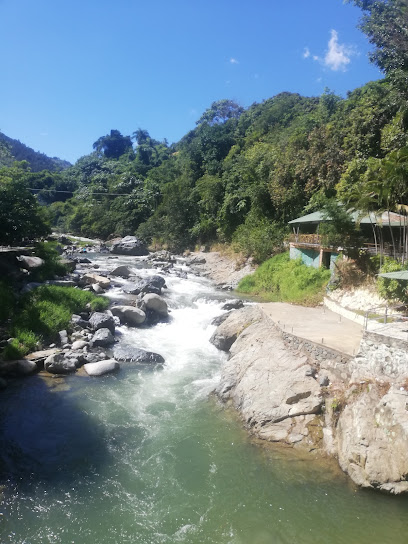
La Confluencia
Explore La Confluencia in Jarabacoa, a breathtaking ecological park perfect for adventure seekers and nature lovers in the Dominican Republic.
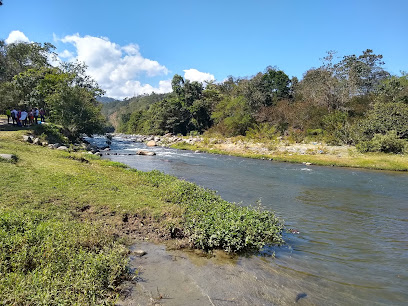
Parque Nacional Valle Nuevo
Discover the natural wonders of Parque Nacional Valle Nuevo, a breathtaking national park in the heart of the Dominican Republic, perfect for adventure seekers and nature lovers.
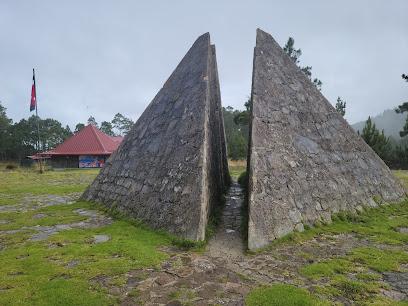
Salto Jimenoa Two
Experience the breathtaking beauty of Salto Jimenoa Two in Jarabacoa, a must-visit natural wonder for adventure lovers and nature enthusiasts.

La Aurora
Experience the rich heritage of Dominican cigars at La Aurora, a premier cigar factory and tourist attraction in Santiago de los Caballeros.

El Sendero del Cacao
Experience the enchanting world of chocolate at El Sendero del Cacao in San Francisco de Macorís, where nature and indulgence meet in perfect harmony.
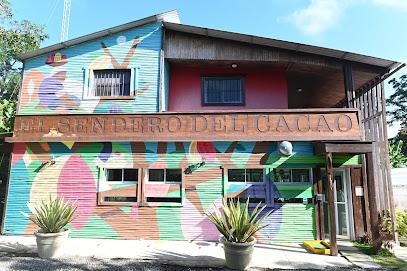
Letrero JARABACOA
Explore the stunning landscapes and vibrant culture of Letrero Jarabacoa, a must-see destination for outdoor enthusiasts in the Dominican Republic.
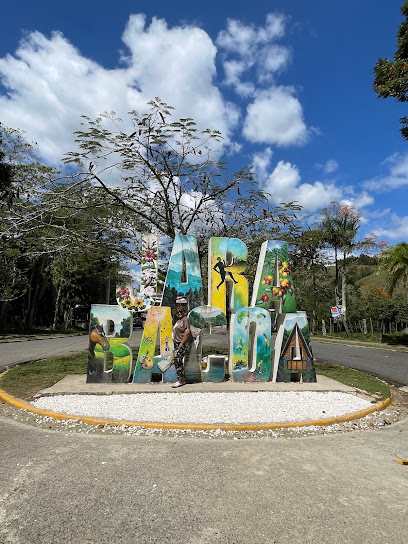
Rancho Jarabacoa
Explore the breathtaking landscapes of Jarabacoa at Rancho Jarabacoa, an adventure sports center offering rafting, hiking, and horseback riding experiences.
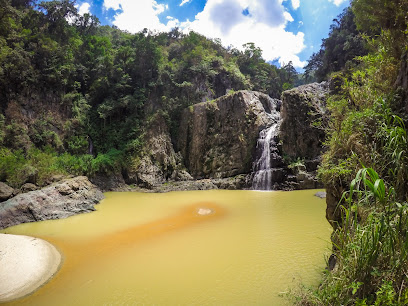
Reserva Científica Ebano Verde
Explore the breathtaking landscapes and diverse ecosystems of Reserva Científica Ebano Verde, a must-visit national park in the Dominican Republic.
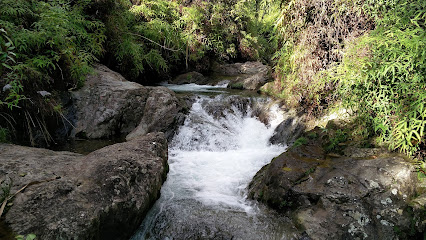
Baiguate Waterfall
Explore the breathtaking Baiguate Waterfall in Jarabacoa, a natural wonder surrounded by lush landscapes and adventure opportunities.
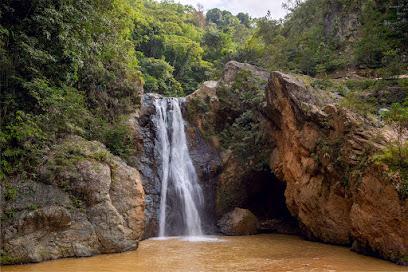
Baiguate Waterfall
Experience the breathtaking beauty of Baiguate Waterfall in Jarabacoa, a stunning natural escape for adventure seekers and nature lovers.
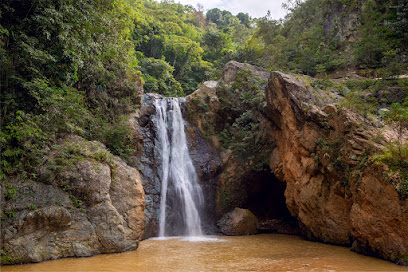
Flying Tony
Experience the thrill of adventure sports in the stunning landscapes of Jarabacoa at Flying Tony, where excitement meets nature.
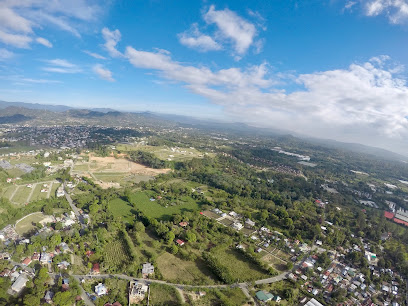
Montaña Mogote
Explore the breathtaking Montaña Mogote in Jarabacoa, a hiker's dream escape with stunning views and diverse trails for all adventure seekers.
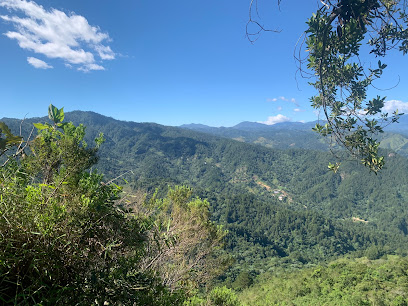
Salto Jimenoa #1 (Entrance)
Explore the stunning Salto Jimenoa #1, a magnificent waterfall in Jarabacoa, showcasing nature's beauty in the heart of the Dominican Republic.
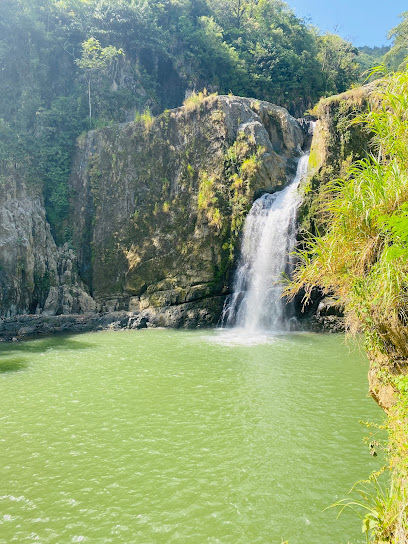
Jarabacoa Eco Adventures
Experience the adventure of a lifetime at Jarabacoa Eco Adventures, where breathtaking landscapes meet thrilling outdoor activities in the heart of the Dominican Republic.
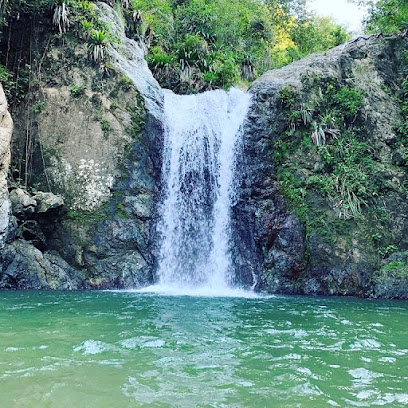
Essential places to dine
Café Colao
Experience the rich flavors of Dominican cuisine at Café Colao in Jarabacoa – where every meal is a celebration of local culture.
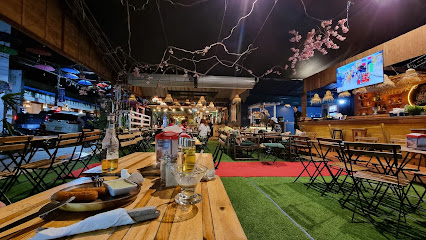
Jamaca de Dios Restaurant
Discover authentic Dominican cuisine at Jamaca de Dios Restaurant in Jarabacoa - where delicious flavors meet stunning mountain views.
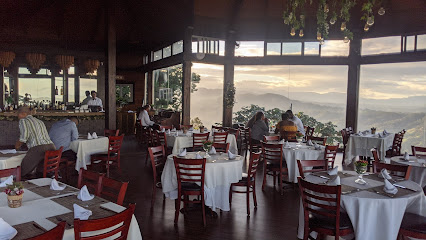
La Tinaja
Discover authentic Dominican flavors at La Tinaja in Jarabacoa – where culinary excellence meets breathtaking mountain views.
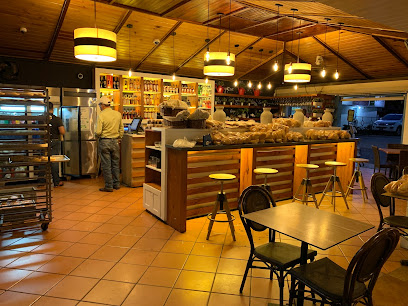
Pizza & Pepperoni
Experience delightful Italian flavors at Pizza & Pepperoni in Jarabacoa – perfect for families and food lovers alike!
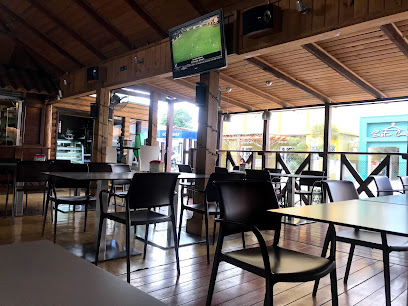
Pizza Getto Jarabacoa
Experience authentic Italian flavors at Pizza Getto Jarabacoa - where every slice tells a story!
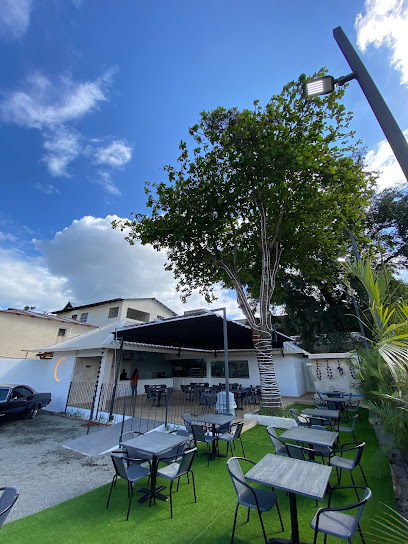
Tostado
Experience the rich flavors of Dominican cuisine at Tostado, a top-rated restaurant in beautiful Jarabacoa.
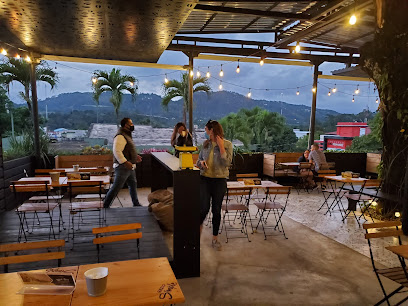
El Fresco Bistro y Café
Discover the flavors of Jarabacoa at El Fresco Bistro y Café – where local ingredients meet culinary artistry in a stunning setting.
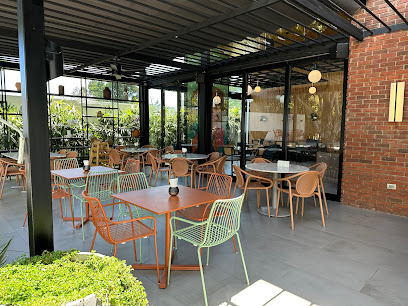
Rostipollo
Experience authentic Dominican cuisine at Rostipollo in Jarabacoa—where every meal tells a story of tradition and flavor.
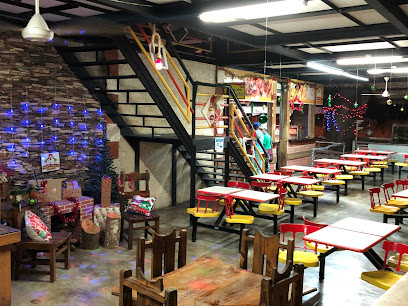
Plaza Alterra
Experience authentic Dominican cuisine in Jarabacoa at Plaza Alterra - where every meal tells a story.
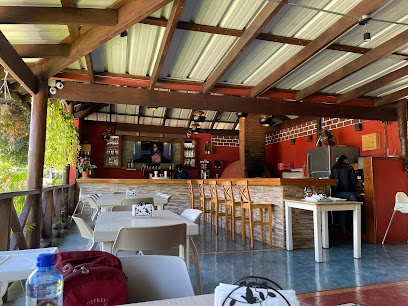
El Buen Sabor
Discover authentic Dominican cuisine at El Buen Sabor in Jarabacoa - where fresh ingredients meet traditional flavors.
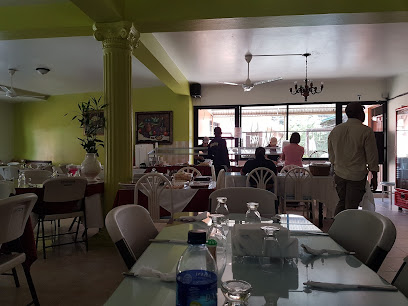
Ribera Country Club
Experience culinary excellence at Ribera Country Club in Jarabacoa – where local flavors meet stunning mountain vistas.
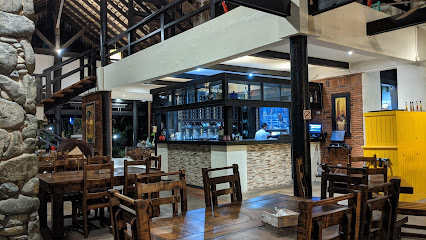
Jarabacoa Serie 50
Experience authentic Dominican cuisine amidst breathtaking mountain views at Jarabacoa Serie 50 - a must-visit culinary gem in Jarabacoa.
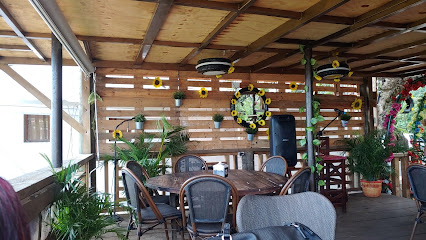
La Baita
Experience the vibrant flavors of Jarabacoa at La Baita - where local ingredients meet culinary creativity.
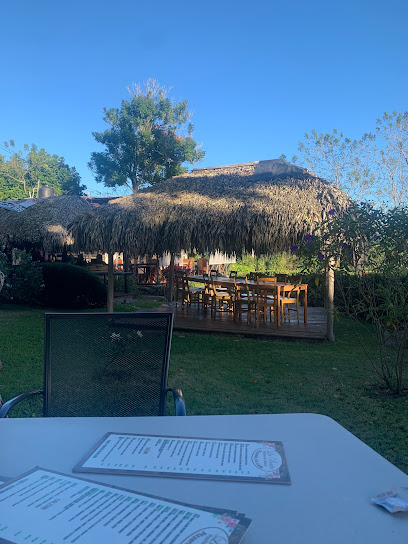
La Verdadera Melaza
Experience authentic Dominican cuisine at La Verdadera Melaza in Jarabacoa, where every dish tells a story.
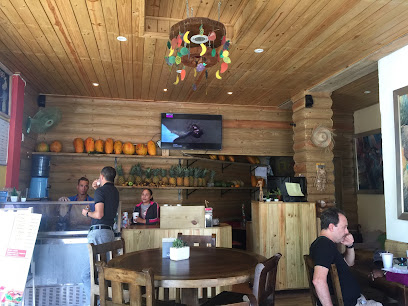
Barak Restaurant Grill Sushi Bar
Experience culinary excellence at Barak Restaurant Grill Sushi Bar in Jarabacoa with its unique blend of sushi and grilled delights.
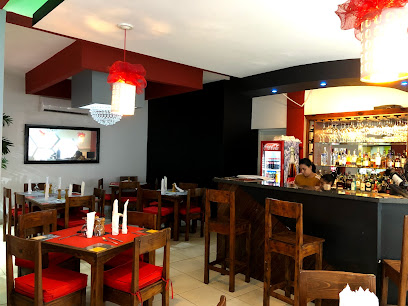
Markets, malls and hidden boutiques
Supermercado El Cofre
Explore local flavors and vibrant products at Supermercado El Cofre, Jarabacoa's premier supermarket for tourists and locals alike.
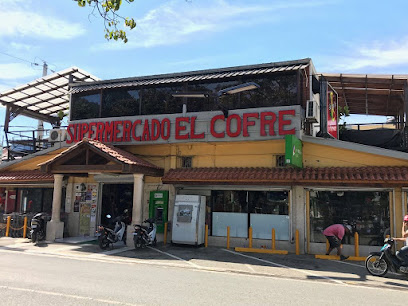
Supermercado Jarabacoa
Explore the vibrant Supermercado Jarabacoa for fresh produce, local delicacies, and unique souvenirs, enhancing your travel experience in the Dominican Republic.
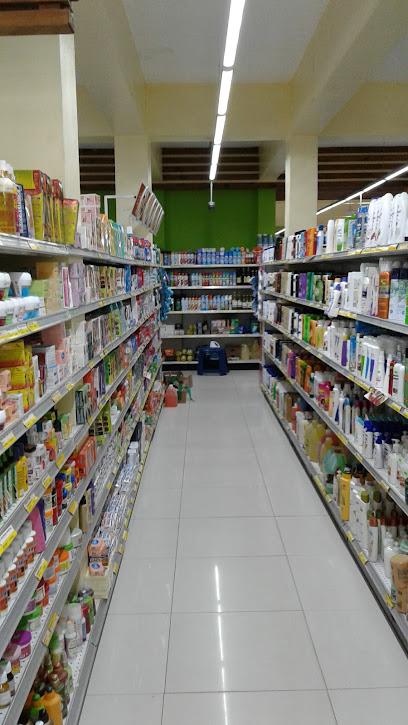
Supermercado El Reguero
Explore local flavors and essentials at Supermercado El Reguero, the ultimate supermarket experience in Jarabacoa, Dominican Republic.

La Esquina Liquor by Camelot
Discover the vibrant atmosphere of La Esquina Liquor by Camelot in Jarabacoa, where local flavors meet a lively bar experience.
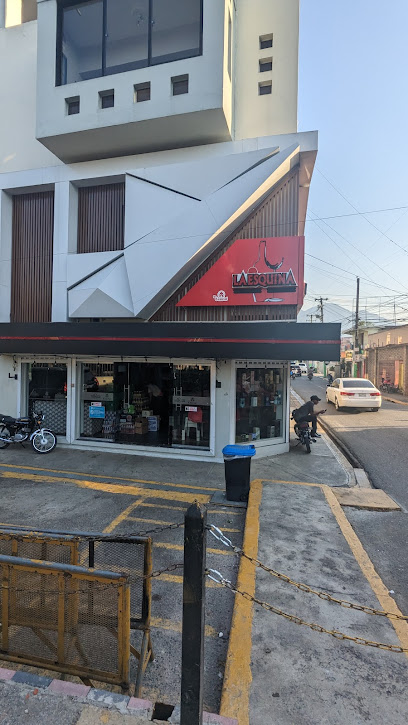
Karini Clothing Store
Discover unique clothing and accessories at Karini Clothing Store in Jarabacoa, where local fashion meets exceptional service.
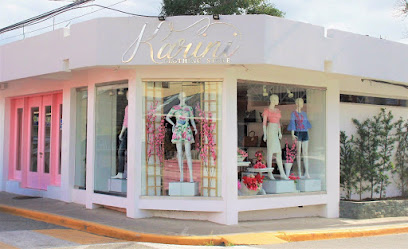
PALETAS CONDESA JARABACOA
Explore the artisanal ice cream experience at Paletas Condesa Jarabacoa, where unique flavors and refreshing treats await every visitor.
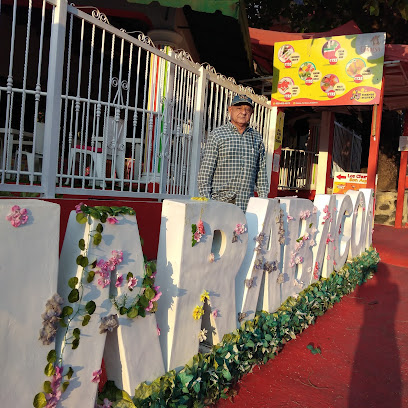
Witchcraft Tattoo Studio
Discover unique artistry at Witchcraft Tattoo Studio in Jarabacoa, where individual expression meets expert craftsmanship in body art.
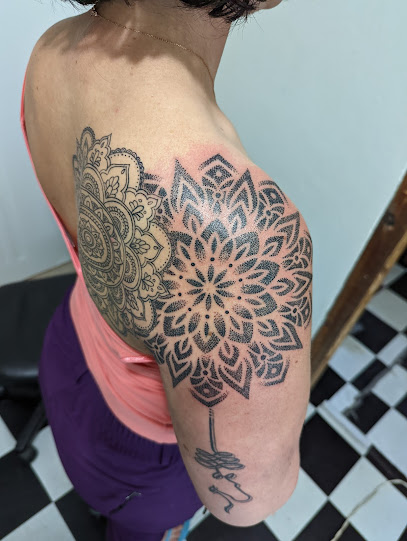
Click Think Different
Explore Click Think Different in Jarabacoa for the finest selection of computer accessories and technology essentials to elevate your digital lifestyle.
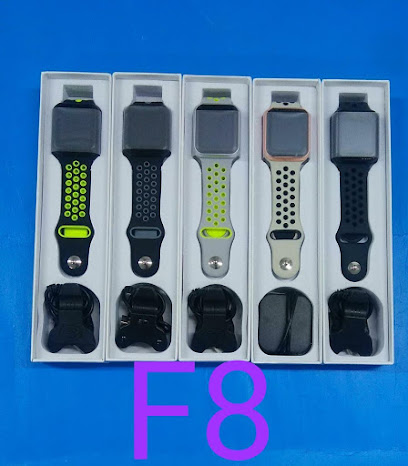
La Reina Plaza de Belleza - Jarabacoa
Explore La Reina Plaza de Belleza in Jarabacoa for a unique blend of beauty supplies, expert advice, and local Dominican charm.
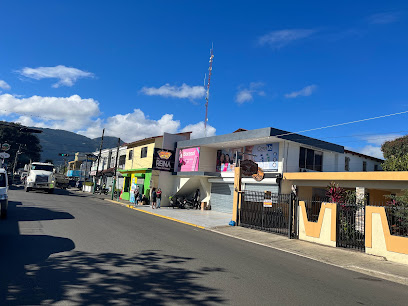
MrwafflesRD
Experience the sweetest side of Jarabacoa at MrwafflesRD, where every dessert is a delightful journey for your taste buds.
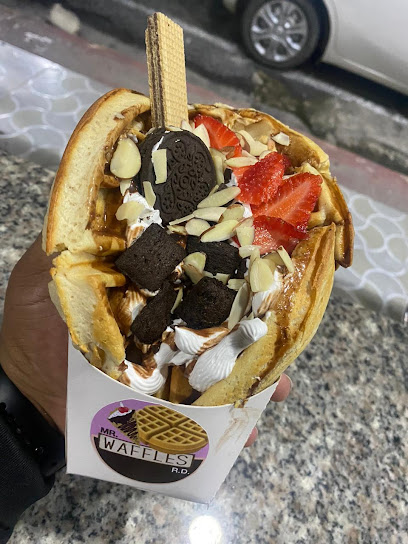
Joyeria Los Veganos
Explore Joyeria Los Veganos in Jarabacoa for stunning handcrafted jewelry that reflects Dominican artistry and culture.
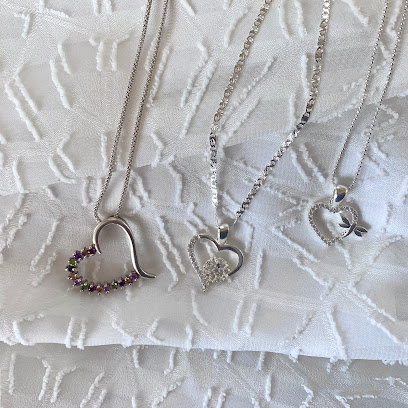
Jarabacopias
Explore the vibrant world of handcrafted paper and art supplies at Jarabacopias, a creative haven in Jarabacoa.

Blue hookah & vape
Discover Blue Hookah & Vape in Jarabacoa for an exceptional selection of vaporizers and e-liquids in a vibrant, welcoming atmosphere.
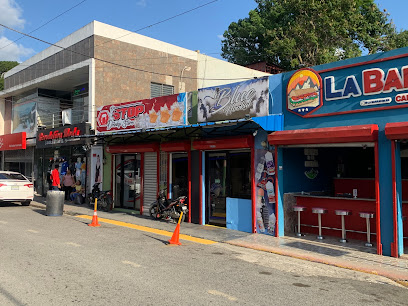
Vape Moon RD
Explore Vape Moon RD in Jarabacoa: Your premier destination for high-quality vaporizers and accessories amidst stunning natural beauty.
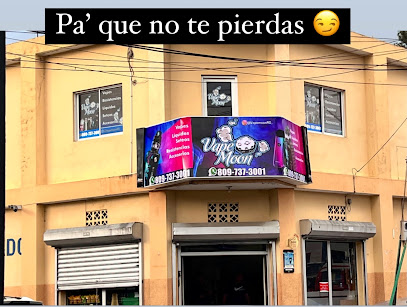
CharialbyStorerd
Explore CharialbyStorerd for unique clothing and souvenirs that reflect the vibrant culture of Jarabacoa, Dominican Republic.

Essential bars & hidden hideouts
Downtown Jarabacoa
Discover the vibrant charm of Downtown Jarabacoa, where local culture meets stunning mountain landscapes and lively nightlife.
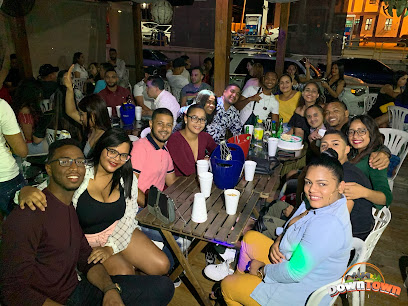
Colmado RAFA
Discover Colmado RAFA in Jarabacoa: a lively bar offering local flavors and a friendly atmosphere, perfect for unwinding and socializing.
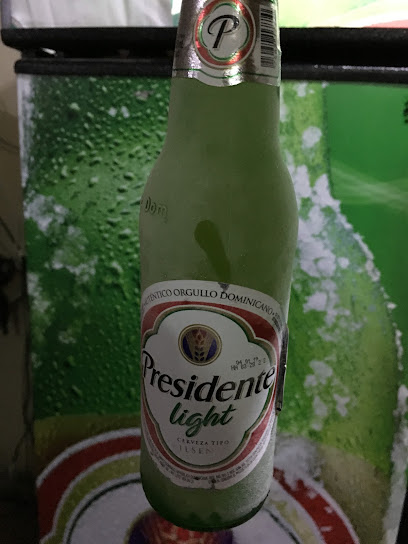
La Fria
Discover La Fria, a vibrant bar in Jarabacoa, where locals and tourists unite over cocktails and lively entertainment in a tropical paradise.

Glass Bar and Lounge Jarabacoa
Discover the charm of Jarabacoa at the Glass Bar and Lounge, where exquisite cocktails meet stunning views in a vibrant atmosphere.

Live Bar y Lounge
Discover the vibrant nightlife of Jarabacoa at Live Bar y Lounge, where great drinks and live music create unforgettable memories.
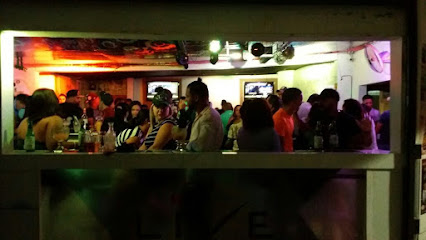
JC Drinks
Discover the lively atmosphere and diverse drink selection at JC Drinks in Jarabacoa, a perfect spot for relaxation and socializing.
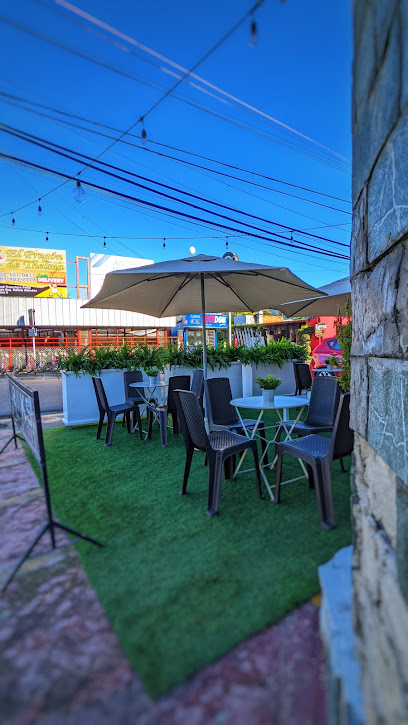
La Jarra bar
Discover La Jarra Bar in Jarabacoa, where vibrant drinks, local flavors, and a welcoming atmosphere create the perfect evening retreat.
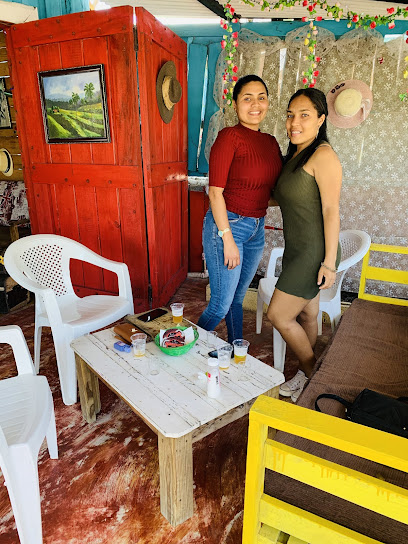
Maya Lounge Bar
Discover the lively Maya Lounge Bar in Jarabacoa, where tropical drinks and vibrant atmosphere create the perfect escape for travelers.

Toque Final Bar Disco
Discover the vibrant nightlife at Toque Final Bar Disco in Jarabacoa, where local music meets a festive atmosphere and delicious cocktails.
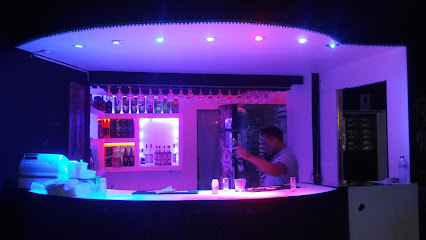
de yuri hookah
Discover the vibrant nightlife of Jarabacoa at de yuri hookah, where unique flavors and a lively atmosphere await every visitor.

Flert Bar Lounge
Discover the vibrant nightlife of Jarabacoa at Flert Bar Lounge, where exceptional drinks and a lively atmosphere await.
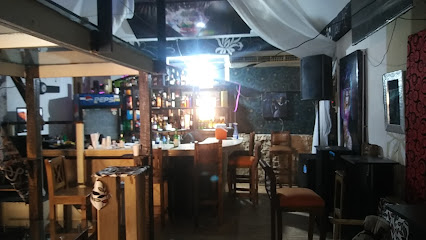
Elixir Bar
Elixir Bar in Jarabacoa offers a vibrant atmosphere with expertly crafted cocktails, perfect for unwinding after a day of adventure in the Dominican Republic.
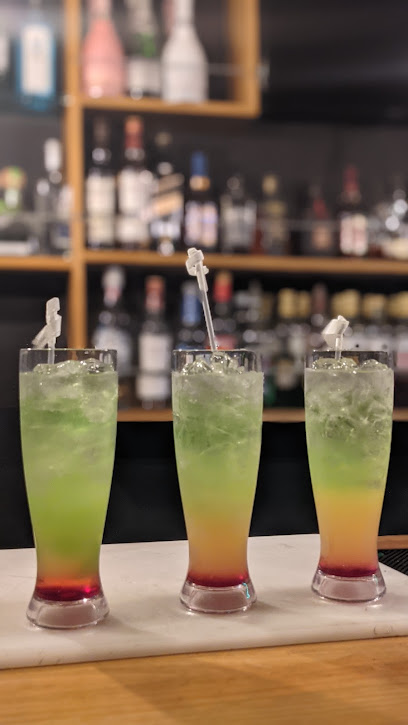
LA PORTELLA
Discover the vibrant atmosphere of La Portella, a charming bar in Jarabacoa, known for its refreshing drinks and friendly service amidst stunning landscapes.
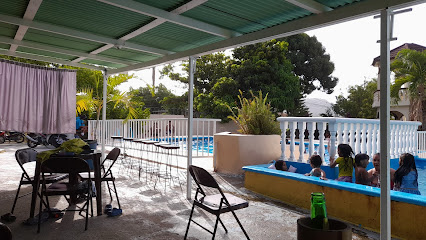
Next Level Bar and Gril
Experience the vibrant atmosphere and delicious cuisine at Next Level Bar and Grill in Jarabacoa, the perfect retreat for tourists seeking local flavors.
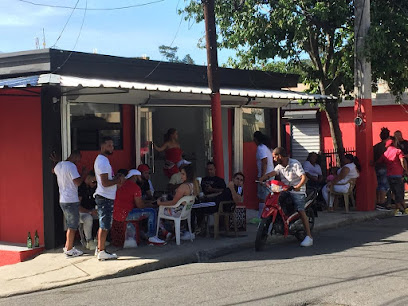
Queens bar
Discover the vibrant energy of Queens Bar in Jarabacoa, a perfect spot for relaxation, cocktails, and local flavor amidst the stunning Dominican landscapes.

Local Phrases
-
- HelloHola
[oh-lah] - GoodbyeAdiós
[ah-dee-ohs] - YesSí
[see] - NoNo
[noh] - Please/You're welcomePor favor/De nada
[por fah-vohr/de nah-dah] - Thank youGracias
[grah-see-ahs] - Excuse me/SorryDisculpe/Lo siento
[dees-kool-pe/loh see-ehn-toh] - How are you?¿Cómo estás?
[koh-moh ehs-tahs] - Fine. And you?Bien. ¿Y tú?
[byen. ee too] - Do you speak English?¿Hablas inglés?
[ah-blahs een-glehs] - I don't understandNo entiendo
[noh ehn-tee-ehn-doh]
- HelloHola
-
- I'd like to see the menu, pleaseMe gustaría ver el menú, por favor
[meh goo-stah-ree-ah vehr ehl meh-noo, por fah-vohr] - I don't eat meatNo como carne
[noh koh-moh kahr-neh] - Cheers!¡Salud!
[sah-lood] - I would like to pay, pleaseMe gustaría pagar, por favor
[meh goo-stah-ree-ah pah-gahr, por fah-vohr]
- I'd like to see the menu, pleaseMe gustaría ver el menú, por favor
-
- Help!¡Ayuda!
[ah-yoo-dah] - Go away!¡Vete!
[veh-teh] - Call the Police!¡Llama a la Policía!
[yah-mah ah lah poh-lee-see-ah] - Call a doctor!¡Llama a un médico!
[yah-mah ah oon meh-dee-koh] - I'm lostEstoy perdido
[ehs-toy pehr-dee-doh] - I'm illEstoy enfermo
[ehs-toy ehn-fehr-moh]
- Help!¡Ayuda!
-
- I'd like to buy...Me gustaría comprar...
[meh goo-stah-ree-ah kohm-prahr] - I'm just lookingSolo estoy mirando
[soh-loh ehs-toy mee-rahn-doh] - How much is it?¿Cuánto cuesta?
[kwan-toh kwehs-tah] - That's too expensiveEso es demasiado caro
[eh-so ehs deh-mah-see-ah-doh kah-roh] - Can you lower the price?¿Puede bajar el precio?
[pweh-deh bah-hahr ehl pree-see-oh]
- I'd like to buy...Me gustaría comprar...
-
- What time is it?¿Qué hora es?
[keh oh-rah ehs] - It's one o'clockEs la una
[ehs lah oo-nah] - Half past (10)Las diez y media
[lahs dyehs ee meh-dee-ah] - MorningMañana
[mah-nyah-nah] - AfternoonTarde
[tahr-deh] - EveningNoche
[noh-cheh] - YesterdayAyer
[ah-yehr] - TodayHoy
[oy] - TomorrowMañana
[mah-nyah-nah] - 1Uno
[oo-noh] - 2Dos
[dohs] - 3Tres
[trehs] - 4Cuatro
[kwah-troh] - 5Cinco
[seen-koh] - 6Seis
[says] - 7Siete
[syeh-teh] - 8Ocho
[oh-choh] - 9Nueve
[nweh-veh] - 10Diez
[dyehs]
- What time is it?¿Qué hora es?
-
- Where's a/the...?¿Dónde está...?
[dohn-deh ehs-tah] - What's the address?¿Cuál es la dirección?
[kwahl ehs lah dee-rehk-syohn] - Can you show me (on the map)?¿Puedes mostrarme (en el mapa)?
[pweh-dehs mohs-trar-meh (ehn ehl mah-pah)] - When's the next (bus)?¿Cuándo es el próximo (autobús)?
[kwan-doh ehs ehl proh-ksy-moh (ow-toh-boos)] - A ticket (to ....)Un boleto (para ....)
[oon boh-leh-toh (pah-rah)]
- Where's a/the...?¿Dónde está...?
History of Jarabacoa
-
Long before the arrival of Europeans, the region now known as Jarabacoa was inhabited by the Taíno people. They called the area 'Xaragual', meaning 'place of waters', due to its abundant rivers and streams. The Taíno were skilled farmers, hunters, and fishermen who cultivated crops like yuca, maize, and sweet potatoes. Their legacy is still present in local culture and place names.
-
The Spanish colonization of Hispaniola began in the late 15th century, bringing significant changes to the region. Jarabacoa's fertile lands attracted Spanish settlers who established agricultural estates. The introduction of European crops and livestock transformed local agriculture. The Spanish also brought Catholicism, which played a crucial role in shaping the cultural and religious landscape of Jarabacoa.
-
In the 19th century, the Dominican Republic sought independence from Haiti and later from Spain. Jarabacoa played a role in these struggles, with many local residents joining the fight for freedom. The town experienced periods of turmoil and rebuilding as it transitioned into a part of the newly independent Dominican Republic. This era laid the foundation for the modern identity of Jarabacoa.
-
Jarabacoa became a significant coffee-growing region in the late 19th and early 20th centuries. Its high-altitude climate and fertile soil were ideal for cultivating high-quality coffee beans. Coffee plantations flourished, and the crop became a major economic driver for the area. The coffee boom brought prosperity and attracted workers from other regions, contributing to the growth and development of Jarabacoa.
-
In the latter half of the 20th century, Jarabacoa began to gain recognition for its natural beauty and outdoor recreational opportunities. The town's rivers, waterfalls, and mountainous terrain made it an ideal destination for ecotourism. Activities like white-water rafting, hiking, and bird-watching became popular. This shift towards sustainable tourism has helped preserve the environment while boosting the local economy.
-
Jarabacoa is known for its vibrant cultural scene, which includes traditional music, dance, and festivals. One of the most notable events is the Festival de las Flores, celebrated every June. The festival showcases the region's rich floral diversity with parades, exhibitions, and concerts. Another key tradition is the celebration of patron saint festivals, which blend Catholic rituals with local customs, reflecting the town's historical and cultural heritage.
Jarabacoa Essentials
-
Jarabacoa is located in the central region of the Dominican Republic, within the La Vega Province. The nearest international airport is Cibao International Airport (STI) in Santiago, approximately 45 kilometers away. From Santiago, you can take a bus, taxi, or rent a car to reach Jarabacoa. The journey typically takes around 1 to 1.5 hours by road. Alternatively, you can fly into Las Américas International Airport (SDQ) in Santo Domingo and then take a bus or drive to Jarabacoa, which is about a 2.5 to 3-hour trip.
-
Jarabacoa is a small town, and many attractions are within walking distance. For longer trips, local taxis and 'motoconchos' (motorcycle taxis) are readily available and relatively inexpensive. Public buses and minibuses (guaguas) operate within the town and connect to nearby cities and villages. Renting a car is also a convenient option for exploring the surrounding areas at your own pace. Consider using local tour companies for guided excursions to nearby natural attractions.
-
The official currency in the Dominican Republic is the Dominican Peso (DOP). Credit cards are accepted in most hotels, restaurants, and shops in Jarabacoa, but it is advisable to carry cash, especially in smaller establishments and rural areas. ATMs are available in Jarabacoa, but it's wise to have some cash on hand before traveling to ensure you have enough funds for smaller vendors and tipping.
-
Jarabacoa is generally a safe destination for tourists. However, like any travel destination, it is advisable to take standard precautions. Avoid walking alone at night in unfamiliar areas and keep an eye on your belongings in crowded places. While Jarabacoa does not have high-crime areas specifically targeting tourists, always stay vigilant and aware of your surroundings, especially in more isolated areas.
-
In case of emergency, dial 911 for immediate assistance. The local police station and medical facilities are available in Jarabacoa. It is recommended to have travel insurance that covers medical emergencies. For minor health issues, there are several pharmacies in the town where you can purchase over-the-counter medications. Major hospitals are located in nearby Santiago for more serious medical needs.
-
Fashion: Do dress casually and comfortably, but modestly, especially when visiting religious sites. Avoid wearing overly revealing clothing. Religion: Do respect local customs and traditions. When visiting churches, dress modestly and speak quietly. Public Transport: Do be respectful and give up your seat to elderly passengers. Don't eat or drink on public transport. Greetings: Do greet people with a handshake or a friendly 'Hola.' A slight bow of the head is also a sign of respect. Eating & Drinking: Do try local delicacies and accept food offerings graciously. Don't refuse hospitality, as it is considered impolite.
-
To experience Jarabacoa like a local, visit the local markets where you can buy fresh produce and traditional Dominican goods. Engage with locals, as they are often friendly and willing to share stories about the town's history and culture. Don't miss visiting the Baiguate and Jimenoa waterfalls, which are popular local spots. For a unique experience, take a coffee tour to learn about the local coffee production process and enjoy some fresh brews. Additionally, try horseback riding or river rafting for an adventurous day out.
Trending Landmark in Jarabacoa
Nearby Cities to Jarabacoa
-
Things To Do in Puerto Plata
-
Things To Do in Santo Domingo
-
Things To Do in Samana
-
Things To Do in Hinche
-
Things To Do in Cap-Haïtien
-
Things To Do in Port-au-Prince
-
Things To Do in Petionville
-
Things To Do in La Romana
-
Things To Do in Bayahibe
-
Things To Do in Saint-Marc
-
Things To Do in Gonaïves
-
Things To Do in Jacmel
-
Things To Do in Punta Cana
-
Things To Do in Salt Cay
-
Things To Do in Cockburn Town







